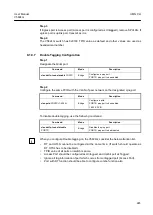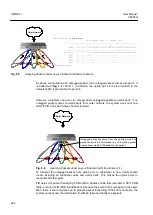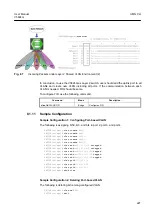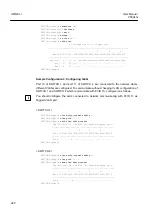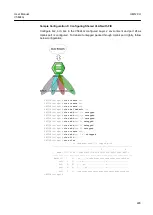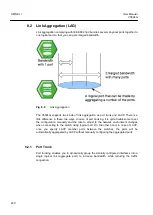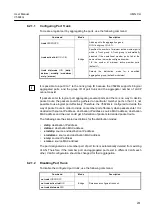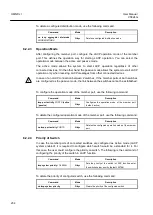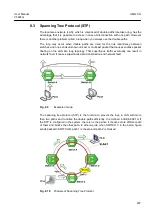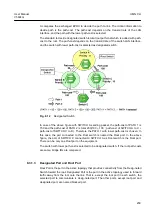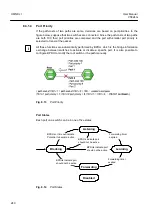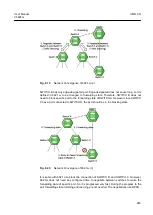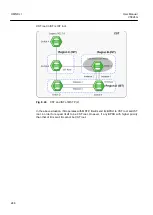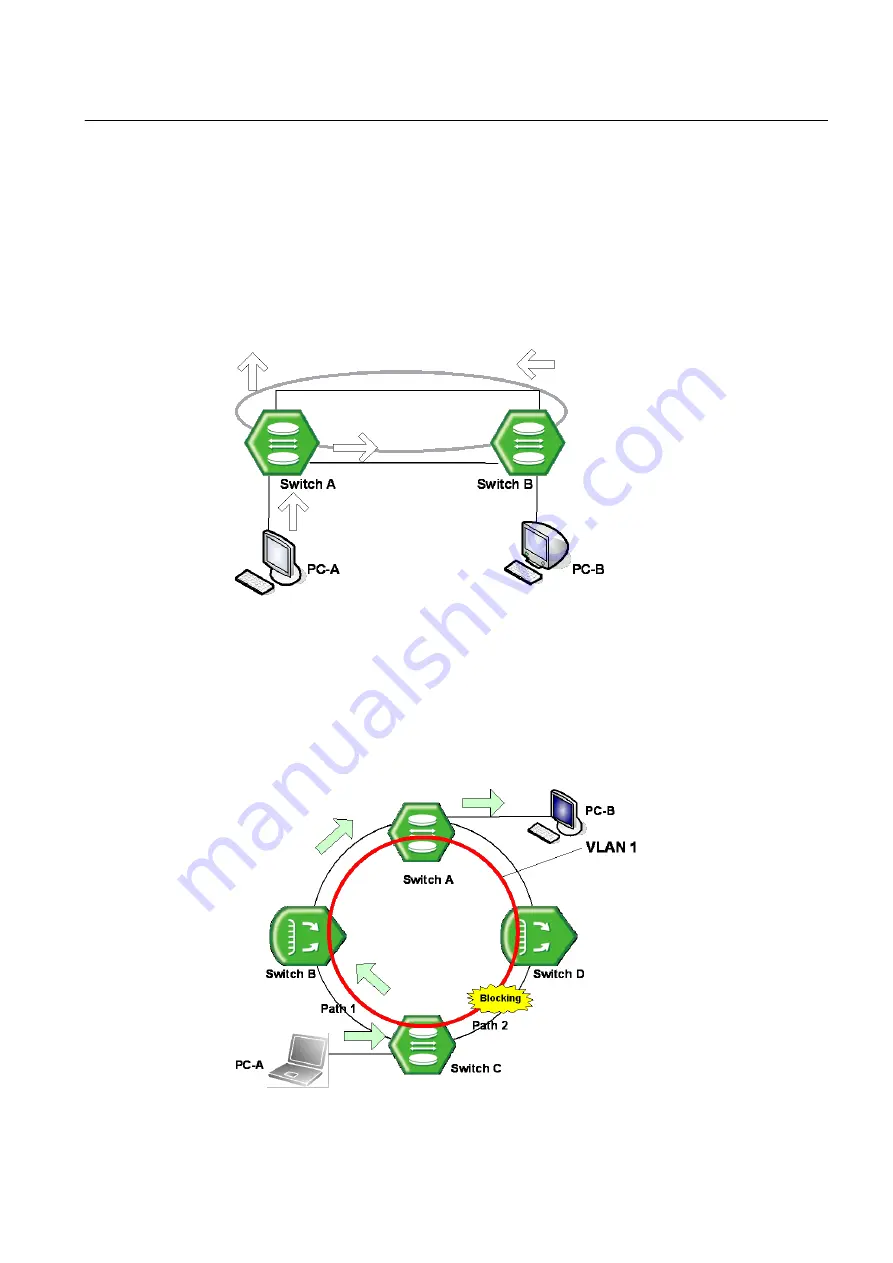
User Manual
UMN:CLI
V5824G
237
8.3
Spanning Tree Protocol (STP)
The local area network (LAN), which is composed of double paths like token ring, has the
advantage that it is possible to access in case of disconnection with one path. However
there is another problem called a loop when you always use the double paths.
The loop may occur when double paths are used for the link redundancy between
switches and one sends unknown unicast or multicast packet that causes endless packet
floating on the LAN like loop topology. That superfluous traffic eventually can result in
network fault. It causes superfluous data transmission and network fault.
Fig. 8.9
Example of Loop
The spanning tree protocol (STP) is the function to prevent the loop in LAN with more
than two paths and to utilize the double paths efficiently. It is defined in IEEE 802.1d. If
the STP is configured in the system, there is no loop since it chooses more efficient path
of them and blocks the other path. In other words, when SWITCH C in the below figure
sends packet to SWITCH B, path 1 is chosen and path 2 is blocked.
Fig. 8.10
Principle of Spanning Tree Protocol

